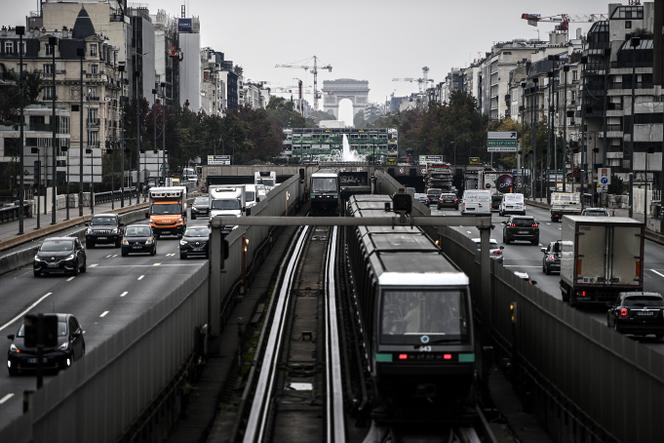


Nearly 9.7 million people in the Paris region, i.e. 80% of the population, are exposed simultaneously to levels of air and noise pollution that greatly exceed the recommendations of the World Health Organization (WHO), Airparif and Bruitparif, the two organizations responsible for monitoring air and noise quality, said in a first of its kind report published on Tuesday, May 28.
This is the first time the two observatories have produced a cross-mapping of air and noise pollution within France's most populous region. The Greater Paris metropolis concentrates 86% of people in situations of highly degraded exposure owing to transport-related noise (major roads, airports, railroads), air pollution or both.
This mapping reveals that 487 municipalities (38% of municipalities in Ile-de-France, the Paris region) are particularly exposed to these two pollutions: More than half their population is simultaneously exposed to air quality deemed poor and noise levels considered significant. A large proportion of these communities are located in what is known as the dense heart of the Paris conurbation: Paris and its inner suburbs, particularly those close to Charles-de-Gaulle and Orly airports.
It's a double disadvantage that's easy to explain: The closer you live to a major traffic artery, the more exposed you are to both noise and pollution (emissions of fine particles and nitrogen oxides) generated by automobile traffic, still largely dominated by combustion engines (gasoline and diesel). With over 40,000 kilometers of roads, including more than 1,000 kilometers of freeways and expressways, the Paris region is criss-crossed by the largest road network in France.
The most critical situations (red zones) are mostly located in the direct vicinity (100 to 200 meters) of major roads. In Paris and surrounding areas, the ring road is obviously a major source of pollution, but other roads in the capital are also bright red: the gateways, the main squares, the large boulevards and the embankment roads still open to traffic.
Charles-de-Gaulle and Orly airports are also a major source of nuisance for local residents and the areas over which they fly. In addition to aircraft, all airport activity is a source of disturbances.
In a study published in February, Airparif revealed that the area around Paris-Charles-de-Gaulle airport was as polluted as the Paris ring road in terms of ultrafine particles, the most dangerous to health. The new air-noise mapping shows that the areas around airport access roads are also zones of highly pronounced co-exposure.
You have 52.1% of this article left to read. The rest is for subscribers only.
